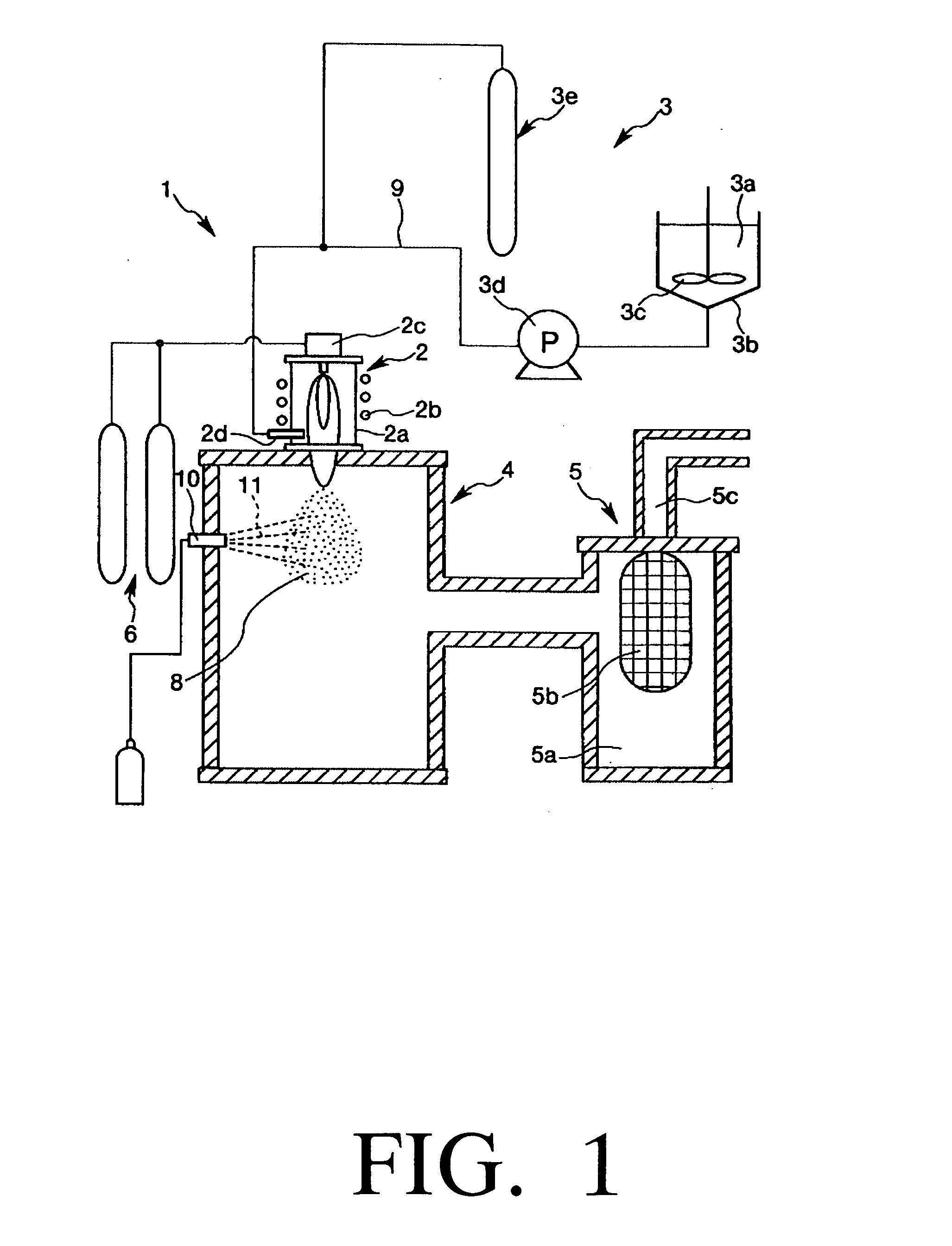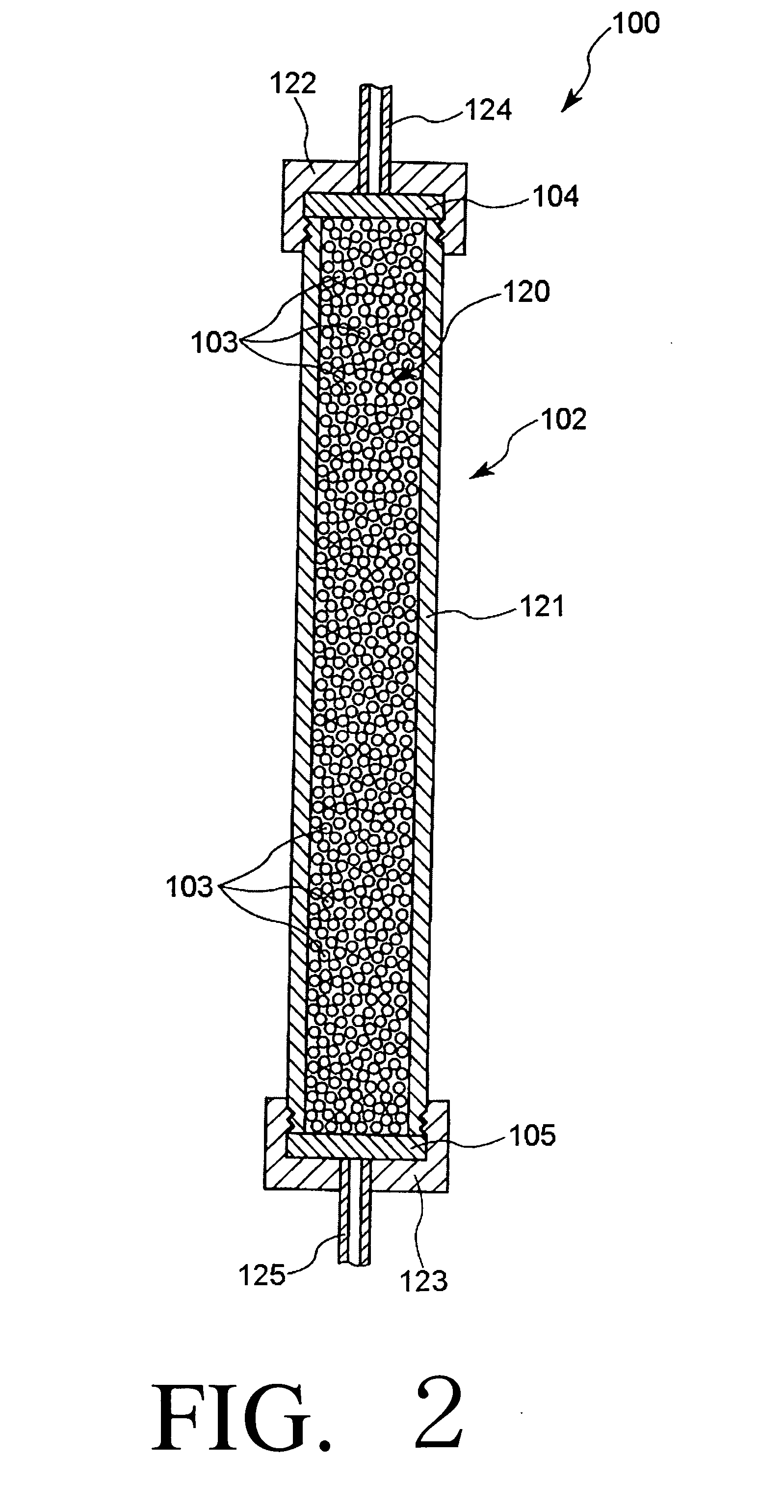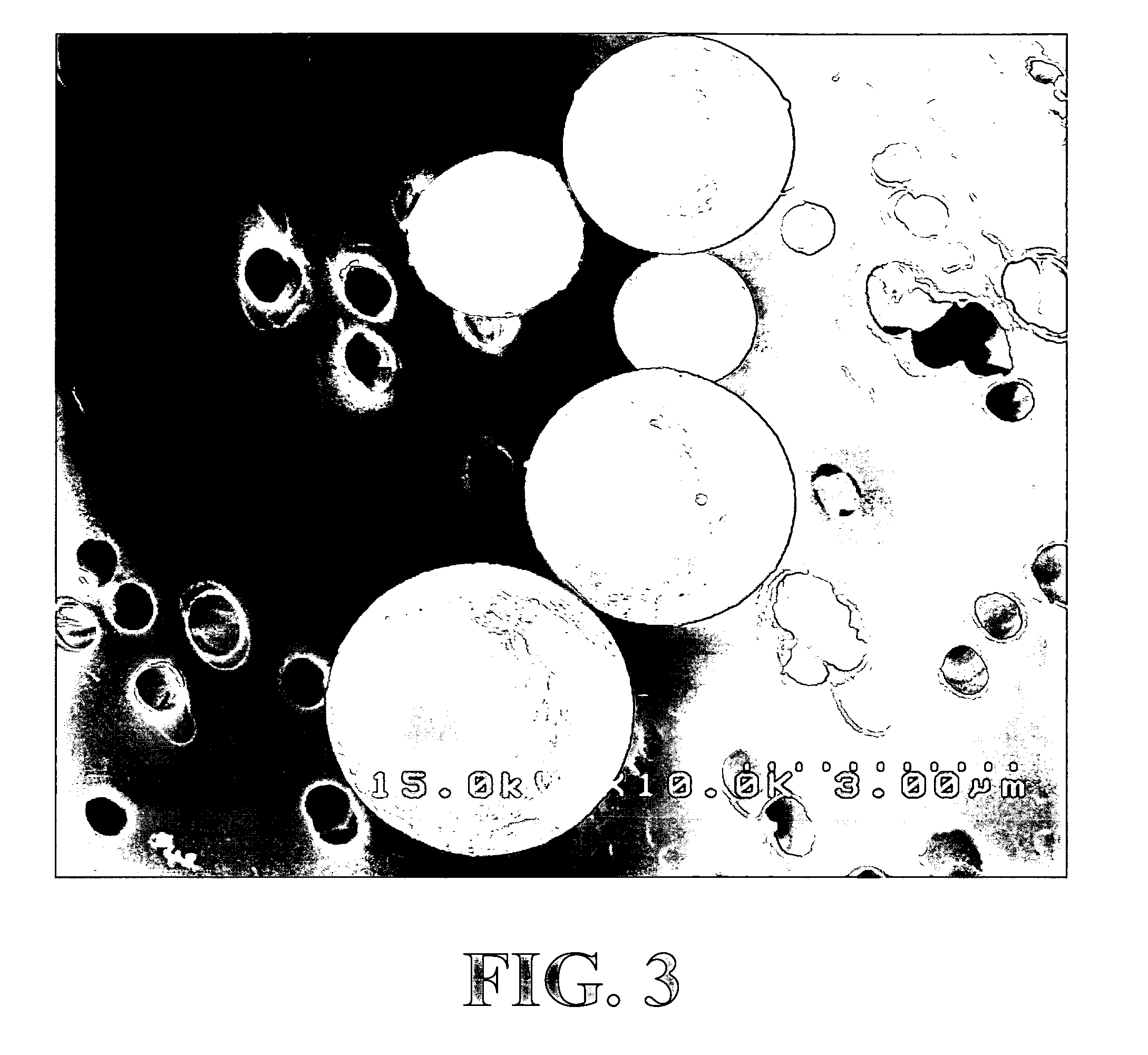Method for producing particles, particles, and adsorption apparatus
- Summary
- Abstract
- Description
- Claims
- Application Information
AI Technical Summary
Benefits of technology
Problems solved by technology
Method used
Image
Examples
example 1
[0153] First, in accordance with a conventional wet synthesis method, hydroxyapatite particles (primary particles) having an average particle diameter of 150 nm were prepared.
[0154] Next, the hydroxyapatite particles were added to a 50 vol % aqueous ethanol solution (dispersion medium), so that the concentration thereof was 30 wt %, and then they were mixed to obtain a slurry.
[0155] Next, bubbles were removed from the slurry by using a deairing process which applies ultrasound vibration to the slurry.
[0156] Next, the slurry obtained in was atomized into a circumferential portion of the plasma flame 7 produced in the thermal plasma equipment 1 shown in FIG. 1 to obtain spherical particles (secondary particles). It is to be noted that a cooling gas was air.
[0157] The operating conditions of the thermal plasma equipment 1 are shown below.
Frequency of high-frequency electric current:4MHzOutput of high-frequency electric current:70kWPlasma temperature at central portion of plasma1...
example 2
[0164] Particles and an adsorption apparatus were produced in the same manner as in the Example 1 except that the temperature of the thermal process in was changed to 700° C.
example 3
[0165] Particles and an adsorption apparatus were produced in the same manner as in the Example 1 except that the temperature of the thermal process in was changed to 400° C.
PUM
| Property | Measurement | Unit |
|---|---|---|
| Temperature | aaaaa | aaaaa |
| Temperature | aaaaa | aaaaa |
| Electric charge | aaaaa | aaaaa |
Abstract
Description
Claims
Application Information
 Login to View More
Login to View More - R&D
- Intellectual Property
- Life Sciences
- Materials
- Tech Scout
- Unparalleled Data Quality
- Higher Quality Content
- 60% Fewer Hallucinations
Browse by: Latest US Patents, China's latest patents, Technical Efficacy Thesaurus, Application Domain, Technology Topic, Popular Technical Reports.
© 2025 PatSnap. All rights reserved.Legal|Privacy policy|Modern Slavery Act Transparency Statement|Sitemap|About US| Contact US: help@patsnap.com



